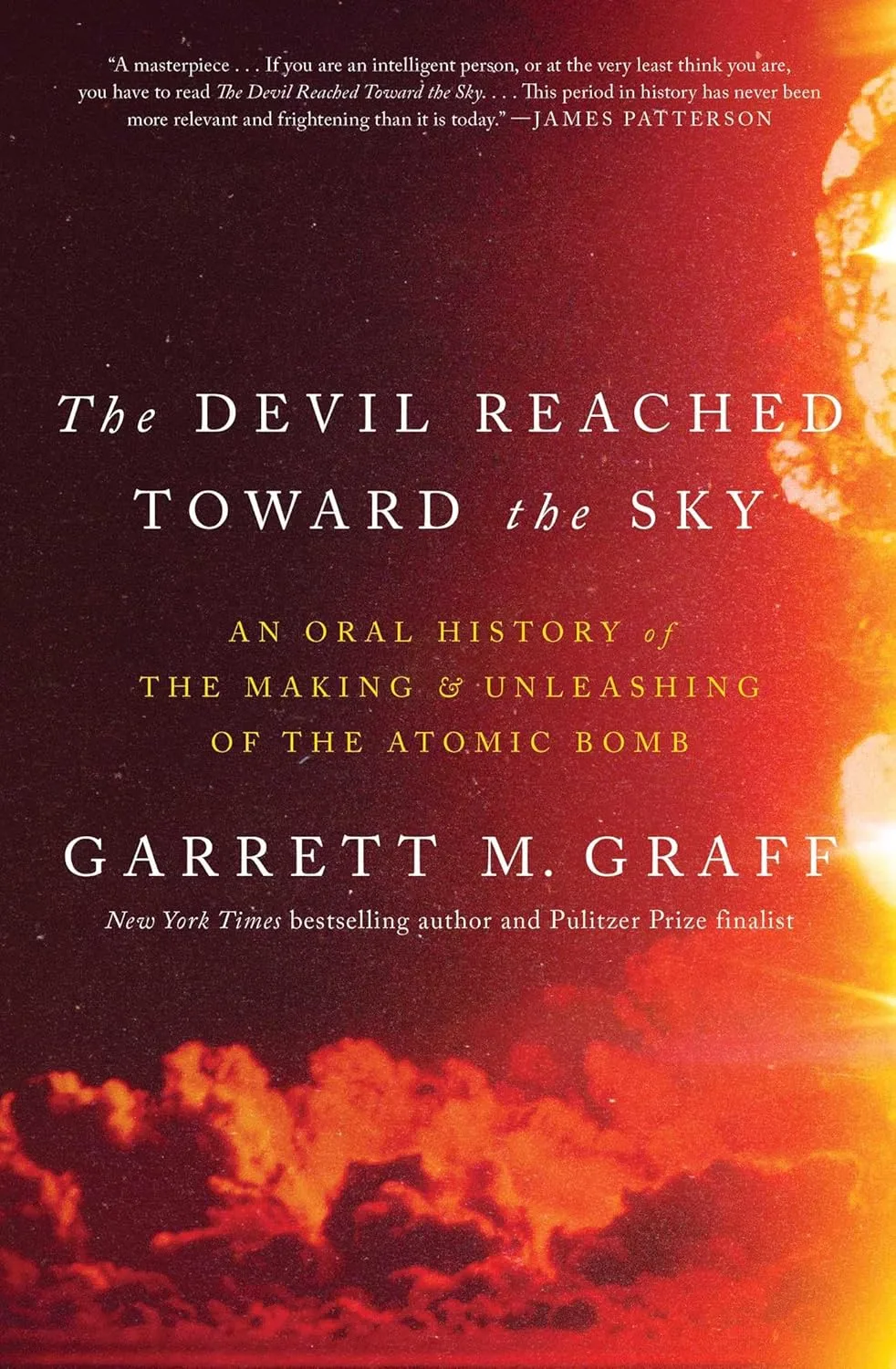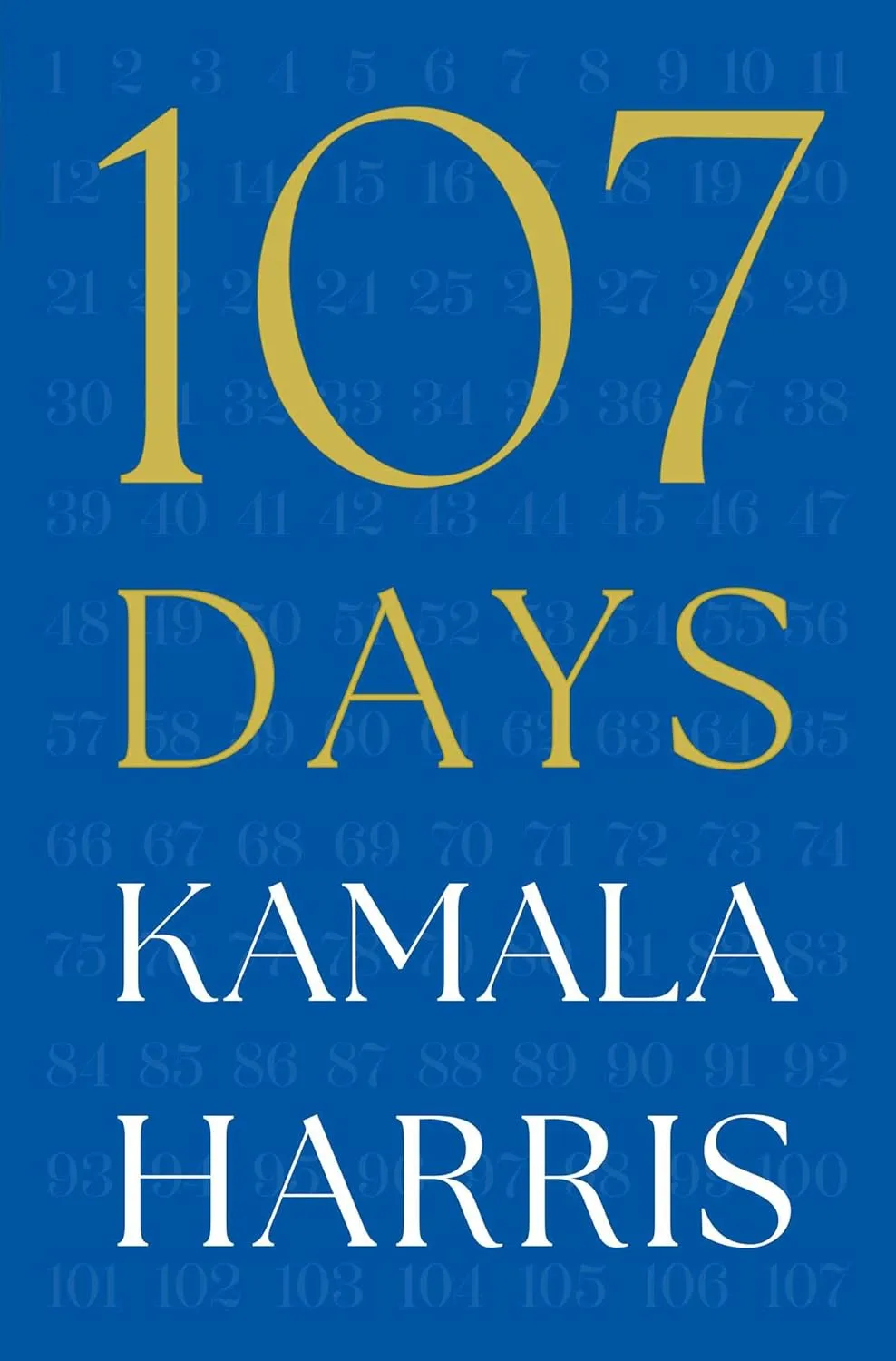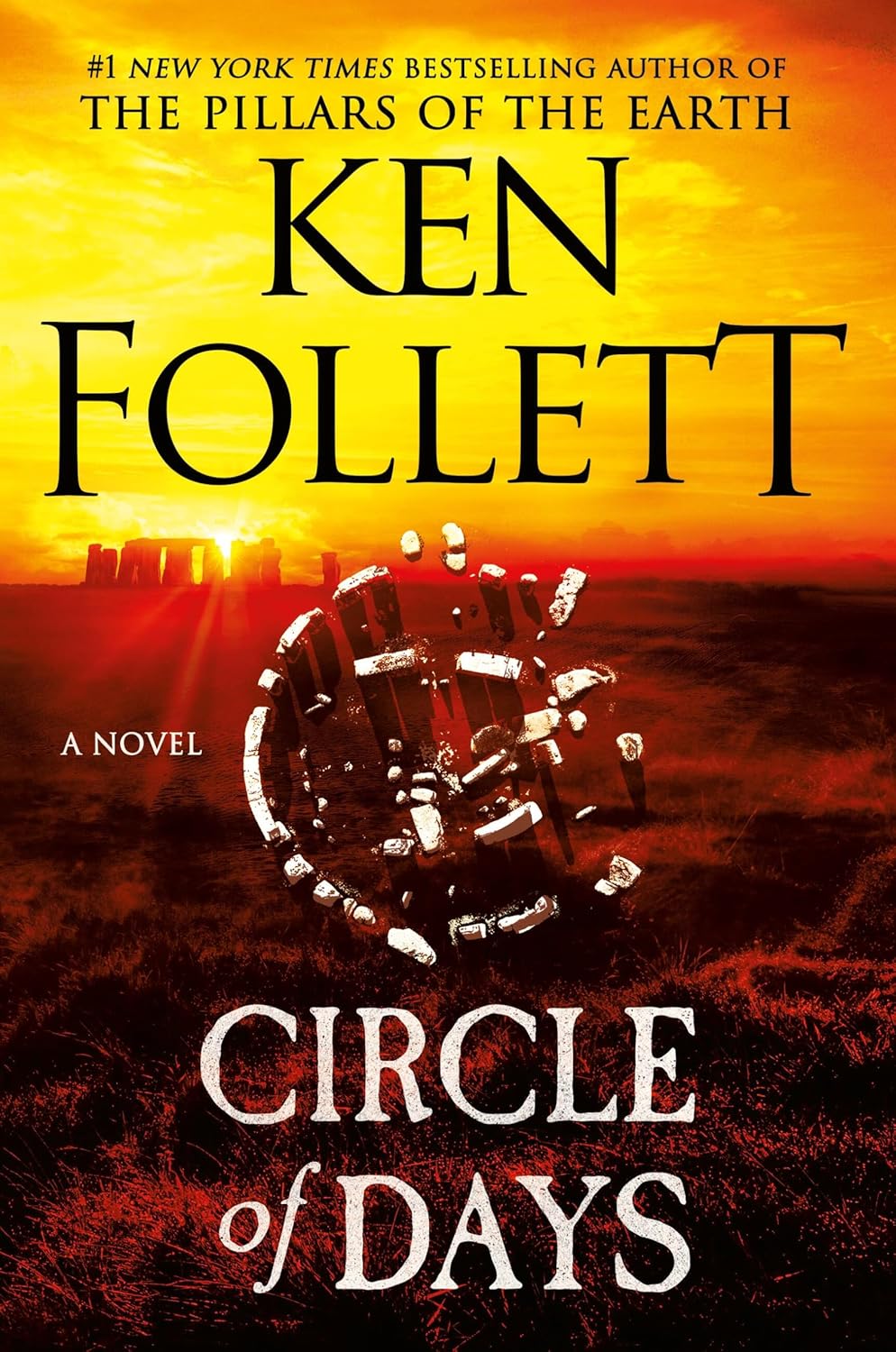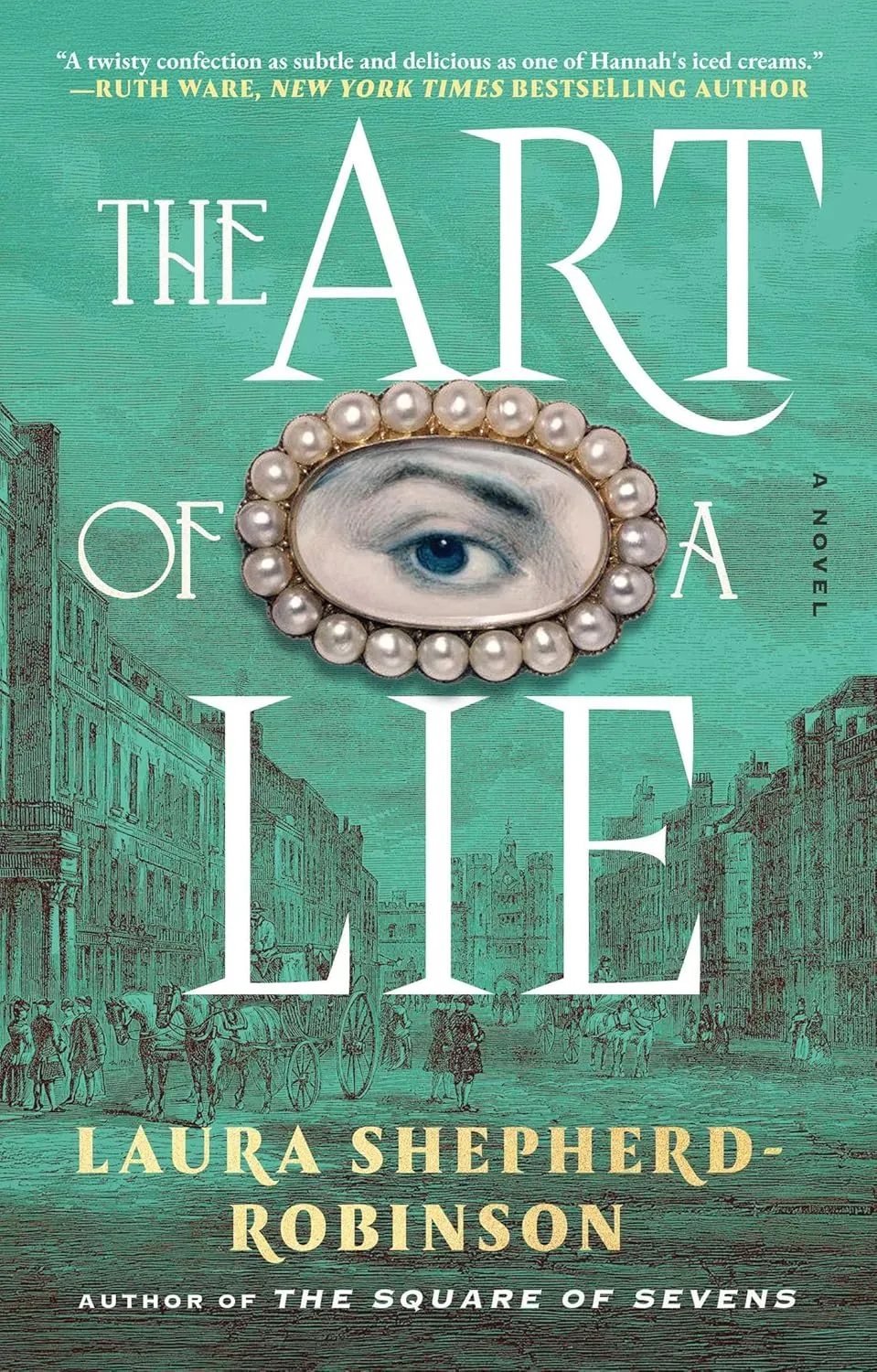Overview
“The Devil Reached Toward the Sky: An Oral History of the Making and Unleashing of the Atomic Bomb” is the latest masterwork from Pulitzer Prize finalist Garrett M. Graff, published by Simon & Schuster in August 2024. This comprehensive oral history chronicles one of humanity’s most consequential and morally complex achievements—the development and deployment of nuclear weapons during World War II.
Through meticulous research drawn from hundreds of oral histories, declassified documents, personal letters, diaries, and eyewitness testimony collected from across the United States, Japan, and Europe, Graff presents a sweeping, human-centered narrative that captures the full scope of the Manhattan Project and its devastating culmination in Hiroshima and Nagasaki.
The book masterfully weaves together the voices of scientists like J. Robert Oppenheimer, military leaders including General Leslie Groves, President Harry Truman, the crews of the B-29 bombers, and most poignantly, the haunting testimonies of the Hibakusha—the “bomb-affected people” who survived the atomic bombings. This panoramic approach creates both a testament to human ingenuity and resilience and a profound examination of the moral complexities surrounding humanity’s most destructive creation.
Key Takeaways
| Element | Details |
|---|---|
| Genre | Historical Non-Fiction/Oral History/Military History |
| Publication Date | August 6, 2024 |
| Publisher | Simon & Schuster |
| Format | Hardcover, eBook, Audiobook (full cast narration) |
| Historical Focus | Manhattan Project and atomic bomb deployment |
| Narrative Style | Oral history with extensive primary source integration |
| Geographic Scope | United States, Japan, Europe |
| Time Period | 1940s World War II era through immediate aftermath |
| Primary Sources | Hundreds of interviews, declassified documents, personal letters |
| Key Perspectives | Scientists, military leaders, politicians, pilots, survivors |
| Moral Complexity | Explores ethical dimensions of nuclear weapons development |
| Research Depth | Extensive archival research across multiple countries |
Book Structure
Graff constructs this oral history as a chronological narrative that follows the atomic bomb’s development from scientific theory to devastating reality, using the voices of those who lived through this unprecedented moment in human history.
Narrative Architecture:
Scientific Genesis:
- Early theoretical physics and the discovery of nuclear fission
- European refugee scientists fleeing Nazi Germany
- Einstein’s letter to Roosevelt and the birth of American nuclear research
- Initial laboratory work and proof-of-concept experiments
The Manhattan Project:
- Assembly of the scientific team under J. Robert Oppenheimer
- General Leslie Groves’ military leadership and organization
- Secret cities: Los Alamos, Oak Ridge, and Hanford
- Engineering challenges and breakthrough moments
- The race against Nazi Germany’s nuclear program
Trinity Test:
- Preparation for the first atomic bomb test in New Mexico
- Scientists’ fears and expectations leading up to Trinity
- The moment of detonation and immediate reactions
- Realization of the weapon’s devastating potential
Decision and Deployment:
- President Truman’s decision-making process
- Target selection: Hiroshima and Nagasaki
- Training the B-29 crews for the atomic missions
- Final preparations and security measures
The Bombings:
- Enola Gay’s mission to Hiroshima on August 6, 1945
- Bockscar’s mission to Nagasaki on August 9, 1945
- Firsthand accounts from bomber crews
- Ground-zero experiences and survivor testimonies
Immediate Aftermath:
- Japanese reaction and surrender decision
- American public and international response
- Scientists’ reflections on their creation
- The beginning of the nuclear age and its implications
Human Impact:
- Extensive testimonies from Hibakusha survivors
- Medical effects and long-term consequences
- Personal stories of loss, survival, and recovery
- The human cost of nuclear warfare
About the Author
Garrett M. Graff stands as one of America’s preeminent historians and journalists, specializing in national security, politics, and pivotal moments in American history. His expertise in oral history methodology and narrative non-fiction has established him as a definitive chronicler of complex historical events.
Professional Credentials:
- Pulitzer Prize Finalist: Recognized for “Watergate: A New History” (2023)
- New York Times Bestselling Author: Multiple bestsellers including “The Only Plane in the Sky”
- Veteran Journalist: Former editor of POLITICO Magazine
- Media Contributor: Regular contributor to Wired, CNN, and The Washington Post
- Subject Matter Expert: Two decades covering politics, technology, and national security
Literary Achievements:
- Ten Published Books: Including several national bestsellers and award winners
- “The Only Plane in the Sky”: #1 national bestseller, comprehensive 9/11 oral history
- “When the Sea Came Alive”: Award-winning D-Day oral history
- “Watergate: A New History”: Called “dazzling” by the New York Times and “standard-setting” by Kirkus Reviews
- “The Threat Matrix”: Acclaimed history of the FBI
Specialized Expertise:
- Oral History Methodology: Master of weaving multiple voices into cohesive narratives
- Archival Research: Expert in declassified documents and primary source analysis
- National Security History: Deep understanding of American intelligence and military operations
- Crisis Journalism: Experienced in covering high-stakes political and security events
Current Platforms:
- Newsletter: Hosts the popular “Doomsday Scenario” newsletter
- Speaking Engagements: Sought-after speaker at historical societies, universities, and conferences
- Media Appearances: Regular commentator on historical and political matters
- Academic Recognition: Featured at institutions like the Library of Congress and National WWII Museum
Graff’s unique combination of journalistic rigor, historical scholarship, and narrative craftsmanship makes him ideally suited to tackle the complex moral and technical dimensions of the atomic bomb’s development and deployment.
Why This Book Resonates
“The Devil Reached Toward the Sky” resonates powerfully with contemporary readers across multiple dimensions, addressing both historical curiosity and urgent present-day concerns about nuclear weapons and moral decision-making in times of crisis.
Historical Significance:
- Provides the most comprehensive oral history of the Manhattan Project to date
- Offers previously untold perspectives from key participants and witnesses
- Documents a pivotal moment that fundamentally altered the course of human history
- Preserves first-person testimonies before they are lost to time
Moral Complexity:
- Explores the ethical dimensions of scientific discovery and its applications
- Examines the tension between wartime necessity and moral responsibility
- Addresses the ongoing debate about the bombings’ necessity and alternatives
- Raises questions about the role of scientists in weapons development
Contemporary Relevance:
- Nuclear weapons remain a pressing global concern in 2024
- Offers lessons for modern discussions about military ethics and civilian casualties
- Provides context for understanding current nuclear proliferation challenges
- Illuminates the decision-making processes of leaders facing unprecedented choices
Human Interest:
- Centers human experiences within vast historical forces
- Gives voice to survivors whose stories demand remembrance
- Shows how ordinary individuals grappled with extraordinary circumstances
- Creates emotional connection to abstract historical concepts
Literary Appeal:
- Graff’s masterful narrative technique makes complex history accessible
- Multiple perspectives create a rich, multifaceted understanding
- Full-cast audiobook brings voices to life with dramatic impact
- Combines scholarly rigor with compelling storytelling
Educational Value:
- Serves as definitive resource for understanding nuclear history
- Provides primary source material for researchers and students
- Offers balanced perspective on controversial historical decisions
- Documents the human cost of warfare and technological advancement
Cultural Impact:
- Contributes to ongoing conversations about war, technology, and morality
- Honors the memory of victims while documenting historical achievements
- Challenges readers to consider the implications of scientific advancement
- Preserves crucial testimonies for future generations
Ideal Audience
Primary Audience:
- History Enthusiasts (Ages 35-70): Readers passionate about World War II history, military history, and pivotal moments in American history
- Academic Community: Historians, graduate students, and researchers studying nuclear history, military ethics, and 20th-century American history
- Military and Veterans: Current and former service members interested in military decision-making and the ethics of warfare
- Science and Technology Professionals: Scientists and engineers grappling with the ethical implications of their work
Secondary Audience:
- General Non-Fiction Readers: Those who enjoy well-researched, narrative-driven historical accounts
- Political Science Students: Individuals studying American foreign policy, national security, and presidential decision-making
- Peace and Anti-War Activists: Those seeking to understand the full impact of nuclear weapons on humanity
- Educators: High school and college teachers looking for comprehensive resources on nuclear history
Specialized Interest Groups:
- Nuclear Policy Experts: Professionals working in nuclear policy, disarmament, and non-proliferation
- Moral Philosophy Students: Those interested in applied ethics and the moral dimensions of technological advancement
- Japanese History Scholars: Researchers studying the Pacific War and its aftermath from multiple perspectives
- Oral History Practitioners: Those interested in methodology and the power of first-person testimony
International Readers:
- Global Peace Studies: International readers interested in nuclear history and its worldwide implications
- Japanese Readers: Those seeking comprehensive Western perspective on the atomic bombings
- European Historians: Scholars interested in the transatlantic dimensions of the Manhattan Project
- Policy Makers: International leaders dealing with nuclear issues in contemporary politics
Content Suitability:
- Mature High School Students and Adults: Complex subject matter suitable for advanced readers
- Serious History Readers: Appeals to those comfortable with detailed, research-heavy narratives
- Emotionally Prepared Readers: Contains difficult content about human suffering and moral complexity
- Long-Form Readers: Substantial book requiring commitment and sustained attention
Memorable Quote
“Engineers experiment with forces of terrifying power, scientists wrestle with moral implications they never imagined, and ordinary people grapple with extraordinary wartime risks, sacrifices, and choices that will transform the course of history.”
This powerful statement encapsulates the central tension explored throughout the book—the intersection of scientific achievement, moral responsibility, and human consequence. It highlights how the atomic bomb’s development was not merely a technical achievement but a profoundly human story involving individuals who never anticipated the full implications of their work.
The quote also emphasizes Graff’s approach to the subject matter, focusing on the human dimension of this monumental historical moment while acknowledging both the scientific brilliance and moral complexity inherent in the Manhattan Project and its culmination.
Central Themes
| Theme | Exploration in the Book |
|---|---|
| Scientific Achievement vs. Moral Responsibility | Examines how brilliant scientists grappled with creating humanity’s most destructive weapon, exploring the tension between scientific curiosity and ethical obligation |
| Leadership Under Extreme Pressure | Chronicles how leaders like Oppenheimer, Groves, and Truman made unprecedented decisions with incomplete information and enormous stakes |
| The Human Cost of War | Centers the experiences of Hibakusha survivors and civilian casualties, ensuring the human impact remains central to the historical narrative |
| Secrecy and Democracy | Explores how the Manhattan Project’s unprecedented secrecy challenged democratic principles and informed consent in wartime decision-making |
| Technology and Unintended Consequences | Demonstrates how technological advancement can produce results far beyond initial intentions, with implications that persist for generations |
| Collective Memory and Testimony | Preserves first-person accounts and examines how different groups remember and interpret these events differently |
| Military Ethics and Civilian Targets | Addresses the moral implications of targeting civilian populations and the evolution of warfare in the nuclear age |
| International Relations and Power | Shows how nuclear weapons fundamentally altered global politics and established new frameworks for international conflict |
| Individual Agency Within Historical Forces | Explores how ordinary people made extraordinary choices while caught up in events larger than themselves |
| Legacy and Responsibility | Examines how the atomic bomb’s development created ongoing responsibilities and moral questions that persist today |
FAQ
Q: How is this different from other books about the atomic bomb? A: Graff’s oral history approach distinguishes this work by centering first-person testimonies from participants across all aspects of the story—scientists, military personnel, politicians, bomber crews, and most importantly, survivors. The comprehensive scope includes voices often overlooked in traditional histories.
Q: Does the book take a position on whether the atomic bombings were necessary? A: Rather than advocating a particular position, Graff presents multiple perspectives and allows readers to hear directly from those who made, carried out, and survived these decisions. The book’s strength lies in its balanced presentation of complex moral questions.
Q: How accessible is this book for readers without extensive history background? A: While comprehensive and detailed, Graff’s narrative approach makes complex technical and historical information accessible to general readers. The oral history format, with its human voices and personal stories, draws readers into the material.
Q: What makes this book particularly timely in 2024? A: With ongoing global nuclear threats and ethical debates about scientific responsibility, the book provides crucial historical context for contemporary discussions about nuclear weapons, military ethics, and the role of technology in warfare.
Q: How extensive was Graff’s research for this book? A: The research involved hundreds of oral histories, declassified documents from multiple countries, personal letters, diaries, and transcripts. Graff conducted extensive archival work across the United States, Japan, and Europe over several years.
Q: Does the book include perspectives from Japanese survivors? A: Yes, the book prominently features testimonies from Hibakusha (atomic bomb survivors), ensuring their experiences and perspectives are central to the historical narrative rather than marginalized.
Q: Is the audiobook version significantly different from the print edition? A: The audiobook features full-cast narration, bringing multiple voices to life and enhancing the oral history experience. This format particularly suits the book’s structure and adds emotional resonance to the testimonies.
Q: What age group is this book appropriate for? A: While dealing with mature and sometimes disturbing subject matter, the book is appropriate for high school students and adults. The content requires emotional maturity to process the moral complexity and human suffering described.
Final Thoughts
“The Devil Reached Toward the Sky” represents a monumental achievement in historical literature, standing as the definitive oral history of humanity’s entry into the nuclear age. Garrett M. Graff has crafted a work that succeeds on multiple levels: as rigorous historical scholarship, as compelling narrative, and as moral examination of one of history’s most consequential moments.
The book’s greatest strength lies in its comprehensive approach to a complex subject. By weaving together voices from across the spectrum of participants—from theoretical physicists to bomber crews to civilian survivors—Graff creates a panoramic view that captures both the technical achievement and human cost of nuclear weapons development. The inclusion of Hibakusha testimonies is particularly crucial, ensuring that the voices of those who directly experienced nuclear warfare remain central to our understanding of these events.
Graff’s mastery of oral history methodology shines throughout the work. Rather than simply collecting testimonies, he creates a coherent narrative that allows different perspectives to inform and challenge each other. The result is a nuanced understanding that avoids both simplistic condemnation and uncritical celebration of the Manhattan Project’s achievements.
The moral complexity Graff presents is perhaps the book’s most valuable contribution. In an era when historical events are often reduced to simple good-versus-evil narratives, “The Devil Reached Toward the Sky” insists on grappling with the genuine ethical dilemmas faced by participants. The scientists who created the bomb, the leaders who decided to use it, and the survivors who lived with its consequences all emerge as complex human beings rather than historical caricatures.
The book’s contemporary relevance cannot be overstated. As nuclear weapons remain a pressing global concern in 2024, understanding how humanity first developed and deployed these weapons provides crucial context for current policy debates. The ethical questions raised by the Manhattan Project—about scientific responsibility, military necessity, and civilian casualties—remain painfully relevant in discussions about modern warfare and technological development.
From a literary perspective, Graff demonstrates why oral history, when done expertly, can be among the most powerful forms of historical writing. The human voices preserved in this work create emotional connections that pure analysis cannot achieve, while the multiple perspectives prevent any single viewpoint from dominating the narrative.
For educators and researchers, the book serves as an invaluable resource, providing primary source material and comprehensive documentation of events that shaped the modern world. For general readers, it offers an accessible yet sophisticated examination of how ordinary people faced extraordinary moral and practical challenges.
“The Devil Reached Toward the Sky” ultimately succeeds as both historical documentation and moral examination. It preserves crucial testimonies before they are lost to time while challenging readers to consider the ongoing implications of the nuclear age. In centering human experiences within vast historical forces, Graff creates a work that honors both the technical achievements and human costs of this pivotal moment in history.
Rating Recommendation: 4.8/5 stars – A masterful, comprehensive oral history that combines rigorous scholarship with compelling storytelling to create the definitive account of the atomic bomb’s development and deployment.
Links
Official Sources:
- Simon & Schuster Official Book Page
- Garrett M. Graff Official Website
- Author Biography and Previous Works
Purchase Options:
Educational Resources:






